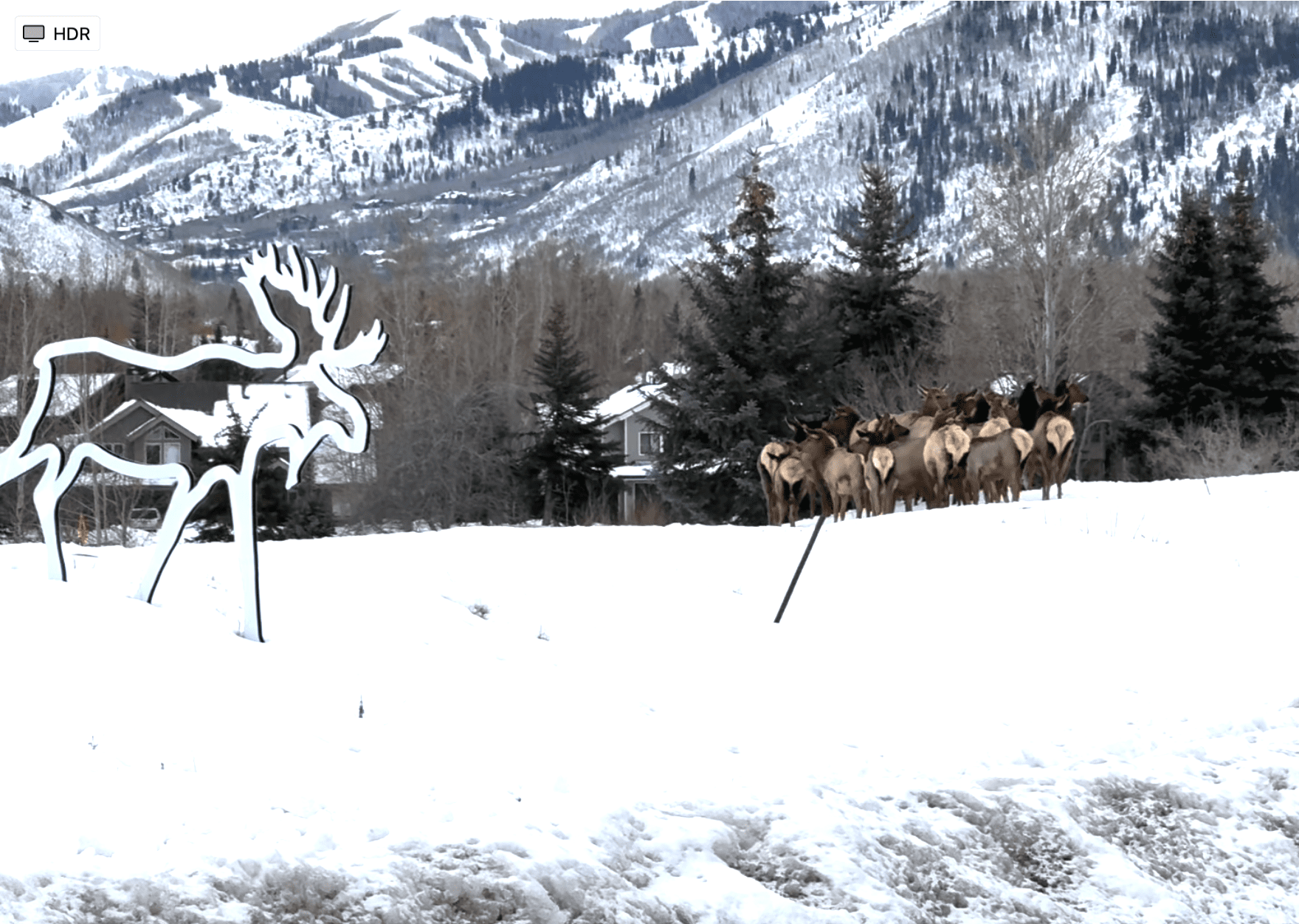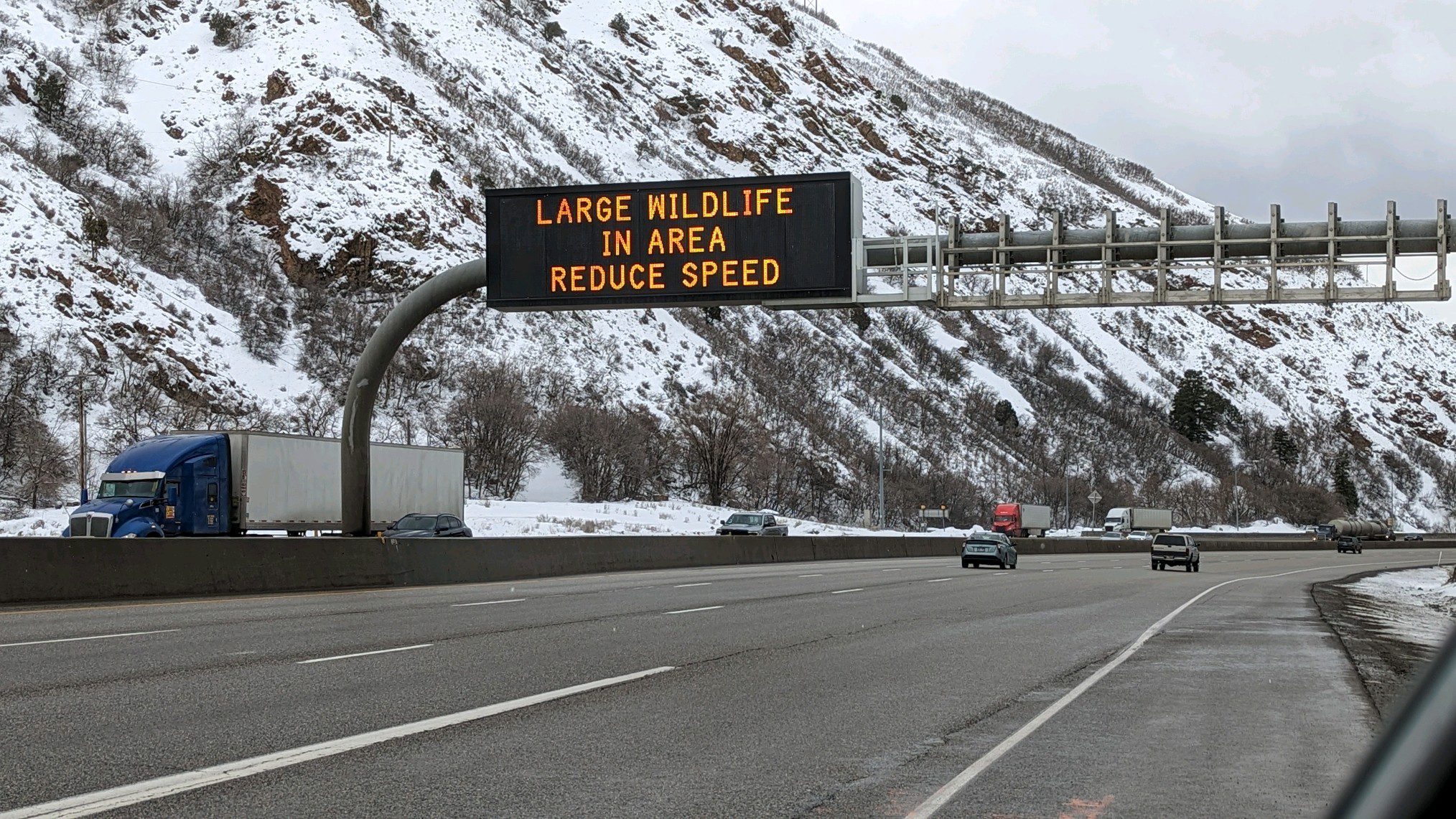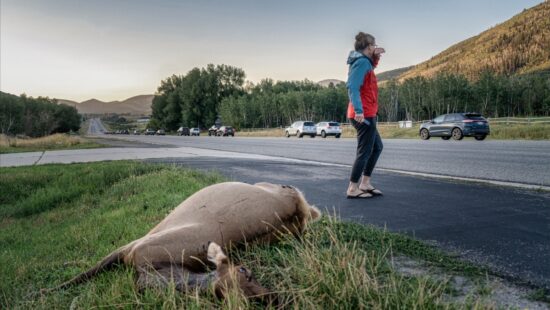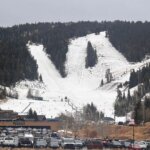Wildlife
Study finds the average moose-vehicle collision costs up to $48,664
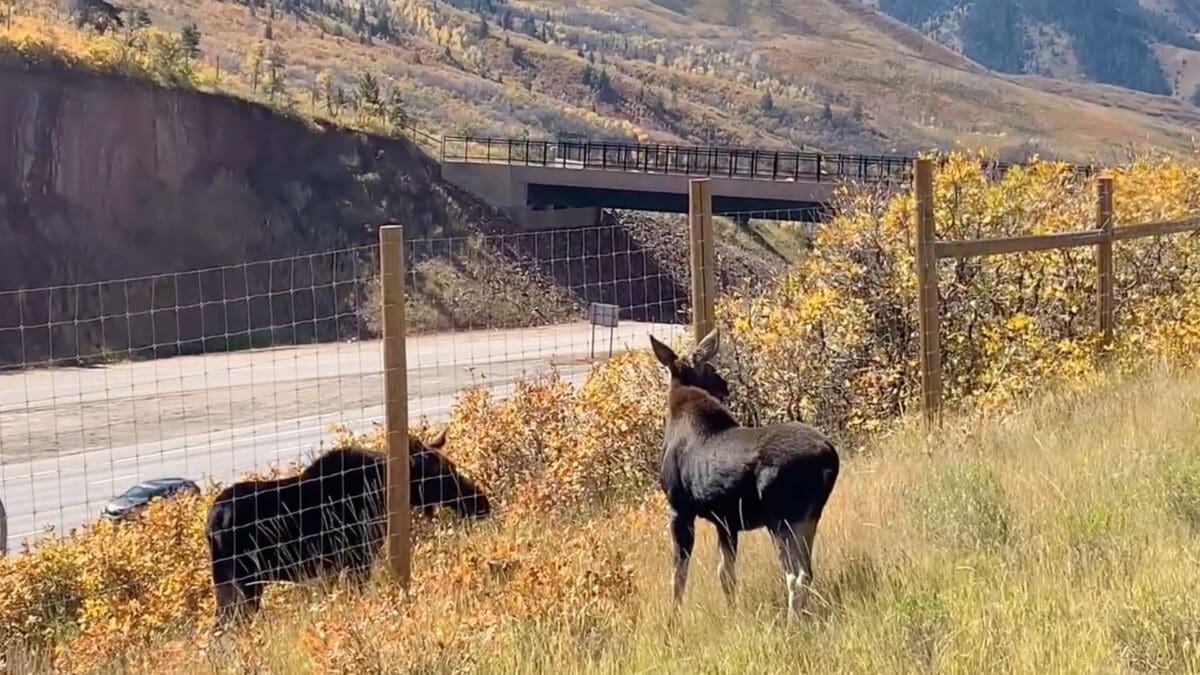
Utah DNR biologists and law enforcement officers were able to safely tranquilize and relocate the cow to the safe side of the fence with her calf. Photo: Utah Division of Wildlife Resources
PARK CITY, Utah — UDOT has recently updated their crash severity costs and the new numbers indicate an increase of approximately 50% since 2019.
With a steady stream of wildlife vehicle collisions reported this year along SR-224, here is some related data.
Average cost of a moose-vehicle collision estimated at up to $48,664
According to a report written and researched by the Center for Large Landscape Conservation, researchers have conservatively estimated that the average cost of a vehicle collision with an animal is:
- deer-vehicle collision: $9,086 in 2021 (adjusted for July 2024, it is $10,468)
- elk-vehicle collision: $24,006 (adjusted for July 2024, it is $27,658)
- moose-vehicle collision: $42,238 in 2021 U.S. dollars (adjusted for July 2024, it is $48,664)
These estimates stem from property damage, human injuries, and fatalities, as well as lost revenue from hunting licenses for the species involved. They do not factor in any other values, such as those associated with biodiversity conservation or lost revenues from wildlife-related tourism and recreation.
Effectiveness and cost of different mitigation measures
A UDOT report from January 2022, “Wildlife Vehicle Collision Study SR-224, Summit County,” includes a table listing the effectiveness of different mitigation measures and their costs. Measures classified as highly effective are double-width cattle guards, wildlife-specific pavement grates, electrified pavement grates, exclusionary fencing, electric fencing, landscaped overpasses, open-span bridge underpasses, and culverts.
Grates and cattleguards were not assigned a cost range, while culverts and electric fences were considered to be in the moderate range. Exclusionary fencing and open-span underpasses were expensive, with landscaped overpasses being the most expensive mitigation method.
Methods needing more data to be compared
Some methods do not have enough data to be assigned an effectiveness grade. Surprisingly, these include speed limit reductions and roadway lighting, both of which are considered to be low-cost. Some methods are still experimental and case specific.
Between 2010 and 2020, most big-game carcasses collected along SR-224 were mule deer. According to the volunteer reports by Save People Save Wildlife, this is also true this year. So far 28 big-game animals have been reported as killed and found on SR-224 this year, of which there were 22 mule deer, 4 elk and 2 moose. UDOT’s report’s annual snowfall data comparison with the number of wildlife-vehicle collisions seems to indicate that as snowfall amounts increase, the total number of wildlife carcasses and animal-related crashes along SR-224 decreases.
UDOT’s Wildlife Road Safety Recommendations
UDOT cautions drivers to be especially alert at dawn and dusk, even more so if you are on a motorcycle.
Heed wildlife crossing signs. These signs are usually placed in areas known to have a high volume of wildlife–vehicle collisions. Along SR-224 Save People Save Wildlife has installed large silhouettes of moose and most recently elk at locations where wildlife is likely to cross. However, wildlife does cross at other locations.
Be alert on roadways near wooded, agricultural, wetland areas and near lakes and streams. Scan both sides of the road. Invite passengers to help the driver search for wildlife. Look for an animal’s eye shine, which can be seen from a distance.
Do not drive distracted. Put away food, phones and other distractions. Do not throw trash out of your vehicle. Trash and food scraps can draw animals to roadways.
When able, use high beam headlights to illuminate the road. If you see an animal near the road, do not swerve, stay in your lane and slow down. Some animals travel in groups. There may be more following behind the first one.
If several animals are standing in the road, do not try to drive through them or get out of the vehicle to chase them. Honk your horn and flash your lights to encourage them to move on.
Be cautious, an animal that has crossed the road may try to go back across again.
















